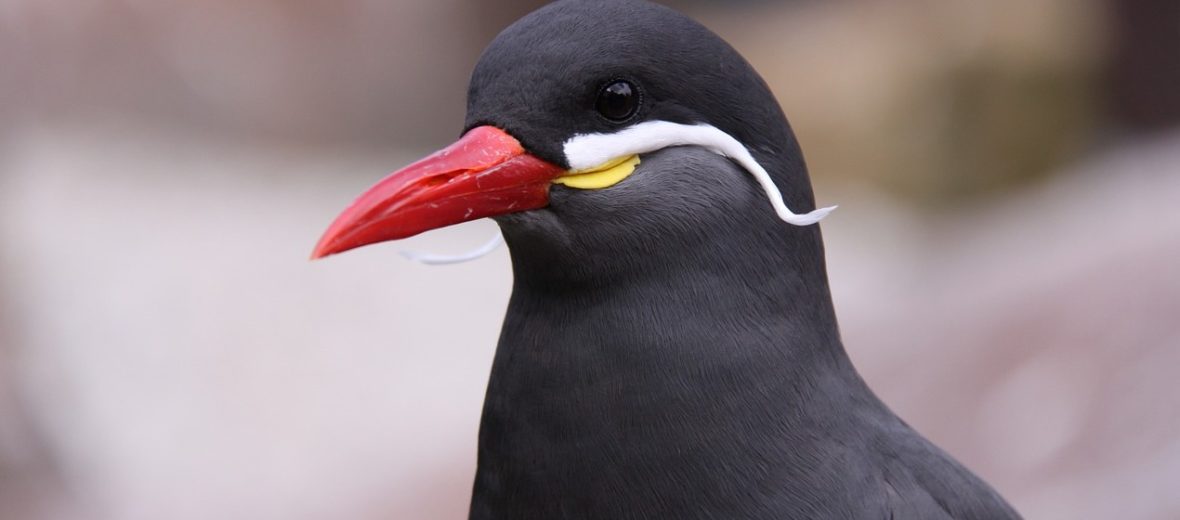
Best known for their impressive white mustaches, the Inca tern is a beautiful sea bird to behold. These terns can be found from sla Lobos de Tierra in Peru to Coquimbo in Chile. They are a gregarious (social) species of bird that nests in colonies of several thousands of birds. Their numbers have been on the decline due to several factors: invasive species, like cats and rats, pose a huge threat. Also a decline in fish stocks due to over fishing of anchovies has posed a real problem. Another big threat has been guano (poop) harvesting. These harvests disrupt the nesting sites and cause mom and dad to flee, abandoning the chicks. The IUCN lists them as Near Threatened.
First the Stats…
Scientific name: Larosterna inca
Weight: Up to 6.3 ounces
Length: Up to 16 inches
Wingspan: Up to 31.5 inches
Lifespan: Up to 20 years
Now on to the Facts!
1.) Inca terns are piscivores (eat fish) that eat sculpins, anchovies, and silversides.
2.) They hunt by plunge diving or dipping for fish.
3.) The Inca tern typically doesn’t migrate unless food is scarce.
4.) Their main predators are rats, cats, and sea lions.
5.) Inca terns can also be kleptoparasitic. This means that they often get their food by stealing from other animals.
But wait, there’s more on the Inca tern!
6.) Their courtship ritual entails a really high flight, with a quick ascension down to 100 feet, followed by the female. This is repeated a few times.
7.) Mated pairs pick a nest site in cliff hollows and fissures. They will even find nesting sites in the old nest burrows of Humboldt penguins.
Did you know…?
The length of this tern’s mustache determines its health. The longer it is, the healthier the bird.
8.) Females lay between 1 – 3 eggs, 2 times per year. They lay eggs from April – July and October – December.
9.) Both mom and dad raise and protect the chicks.
10.) The Inca tern can sometimes carry diseases like avian malaria and avian influenza.
Now a Short Inca Tern Video!
Also, check out the Critter Science YouTube channel. Videos added frequently!
Want to suggest a critter for me to write about? Let me know here.



